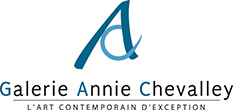Art of glass

Since the end of the 1960s-1970s, in an extraordinary momentum produced by the birth of the "studio-glass" movement in the USA and in Europe, passionate artists in search for new expressions, give a new start to an age-old.art, with a return to handicraft structures.
Several artists got a passion for moltenglass. After Henri Cros (1840-1907) art deco pioneers such as François Decorchement and Gabriel Argy–Rousseau become expert in this technique.
In France, when François Decorchemont died in 1971, with their grandfather’s archives Antoine Leperlier and Etienne Leperlier try to adapt the ancient technique through modern proceedings.
This technique originates from ancient techniques used in manufactures, and ironsmiths, it got well developed since the jifties under the impulsion of great works of contemporary czech glass artists Brychtova. Libensky, Hlava, Elias, Novak, Vachtova, Trnka, Rybàk, Houserova, Kotska are among the most famous.
Since the « studio glass » in the 1970s, some generation of the glass artists made their best to discover a new plastic language for glass, allowing the art of glass-making to overcome the gop between the useful and the sculpure.
Let us quote among others, the Czech artist Bretislav Novak, who uses optical properties of glass with sculptures or culating the new visions in the surrounding context.
The artist glass, Yan Zoritchak, slovaquian arrived in France in the 1970s, will renew thanks to his personal technique in optical glass, moulding within which he will inject metal leaves, hight chips, creating a cosmic universe through pieces the transparency of which is magnified by means of polishing.
Since the fall of 1992, the Art gallery Annie Chevalley exhibits on a permanent-basis, a selection of works from contemporary glass artists. Works made by Brychtova, Libensky, Hlava, Elias, Bretislav Novak, Dana Vachtovà, Jaromir Rybàk, Pavel Trnka, Houserova, Kostka among the mostfamous ones are displayed to the public.





